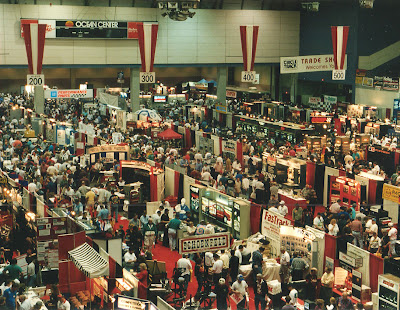
How to Sell at Trade Shows
According to the Centre for Exhibit Industry Research, the majority of trade show attendees are decision makers or influencers that plan to make a purchase within the next 12 months. Don't waste an opportunity like that -- follow these guidelines to help make sure you are ready to sell effectively.
Avoid soft sells
Trade shows require a hard-sell approach. When attendees show interest in your booth, approach them immediately and invite them to learn more about your products or services. Don't leave people waiting -- trade show attention spans are short, and people will leave your booth if they can't get help in 60 seconds or less.
Be engaging
The way you greet a visitor to your booth shows your professionalism and willingness to help. Avoid innocuous greetings like "Can I help you", "Hi, how are you?", or "How's the show going?". Instead, ask a direct question that engages the visitor and helps you gauge their interest in your company's products or services -- "What information can I tell you about our new heating system?" or "Hello, what are you looking for in a patio door?".
Watch your manners
Certain booth behaviour looks sloppy and conveys that you're not interested in your customers. Don't sit down. Don't eat or drink at the booth. Never leave your booth unattended. Don't spend time chatting with colleagues instead of focusing on customers.
Qualify prospects quickly
The first thing you should do once you meet someone new is establish who they are (buyer, decision maker, supplier, competitor, etc.) and where they're located. This way you won't end up spending important time with a person who isn't responsible for buying your product/service, or who is located in a region your company doesn't serve. You can find this information out by asking some key questions, looking at their badge, or requesting a business card which will have the person's title and address.
Ask lots of questions
Engage a prospect by asking open-ended questions -- ones that require more than a yes/no answer. This will help you determine their needs and interests. Focus your responses on how your product or service can meet these needs. Be sure to observe the 80/20 rule -- listen 80% of the time and talk 20% of the time. Try to avoid any kind of prepared sales pitch, which can begin to sound robotic after you've said it for the 50th time.
Keep good records
Write down all the relevant information about a prospect on a "lead card" which contains: the person's name, title, address, phone/fax number, e-mail address (all these can come from a business card), needs/interests, budget and timing. Use this card for your post-show follow-up when you return to the office.





No comments:
Post a Comment